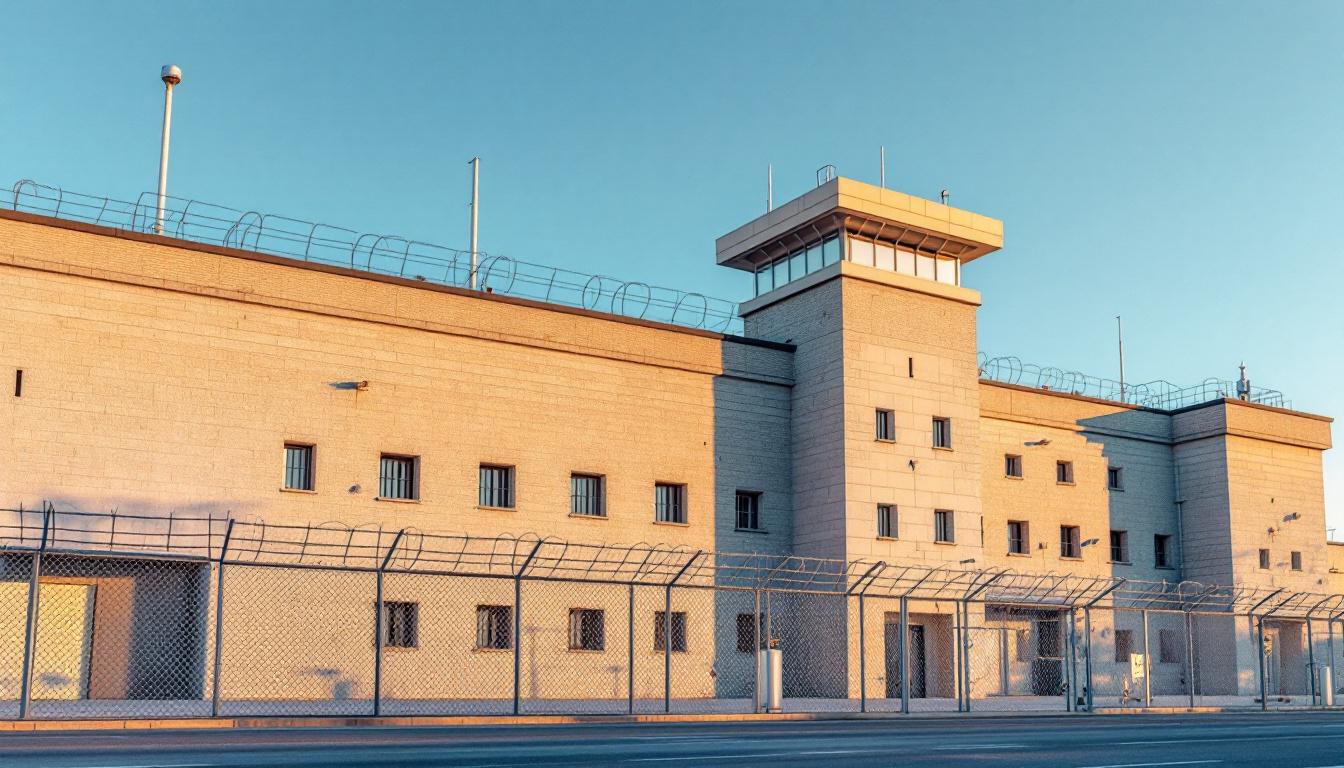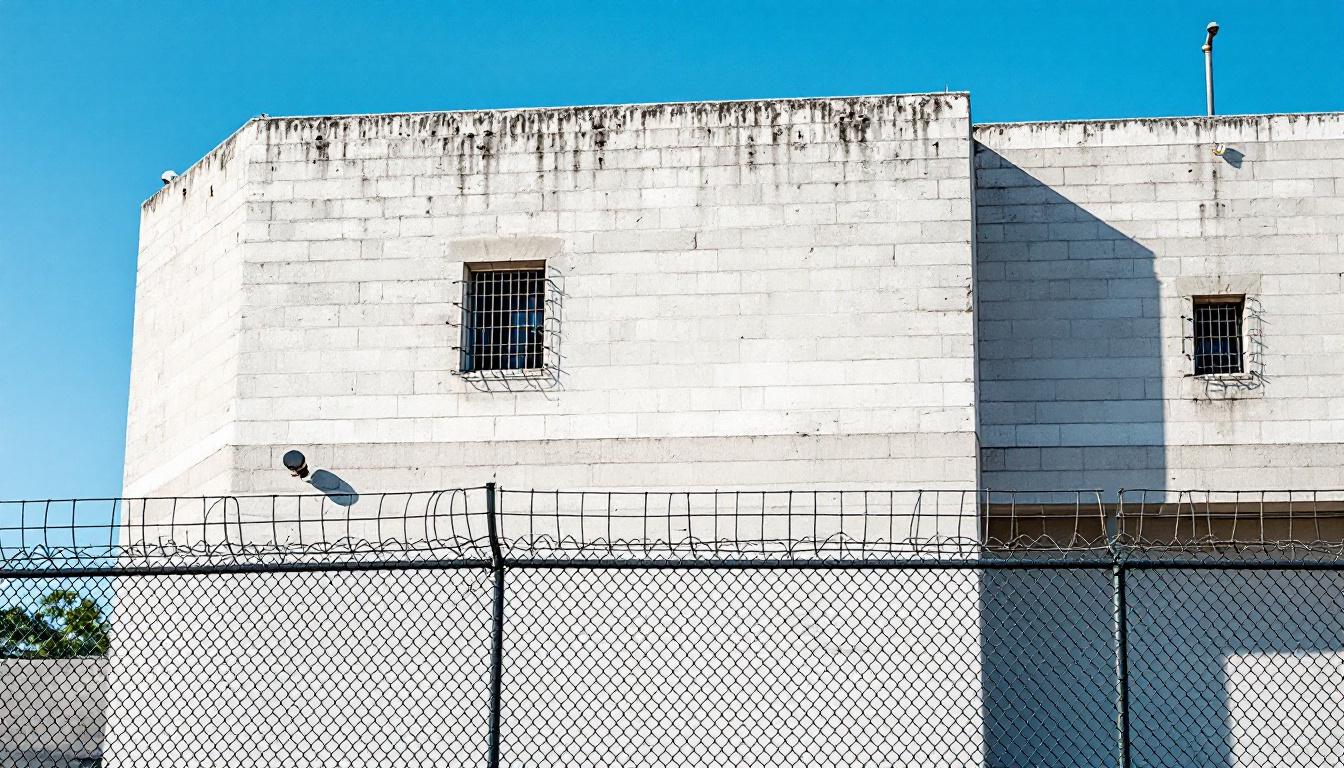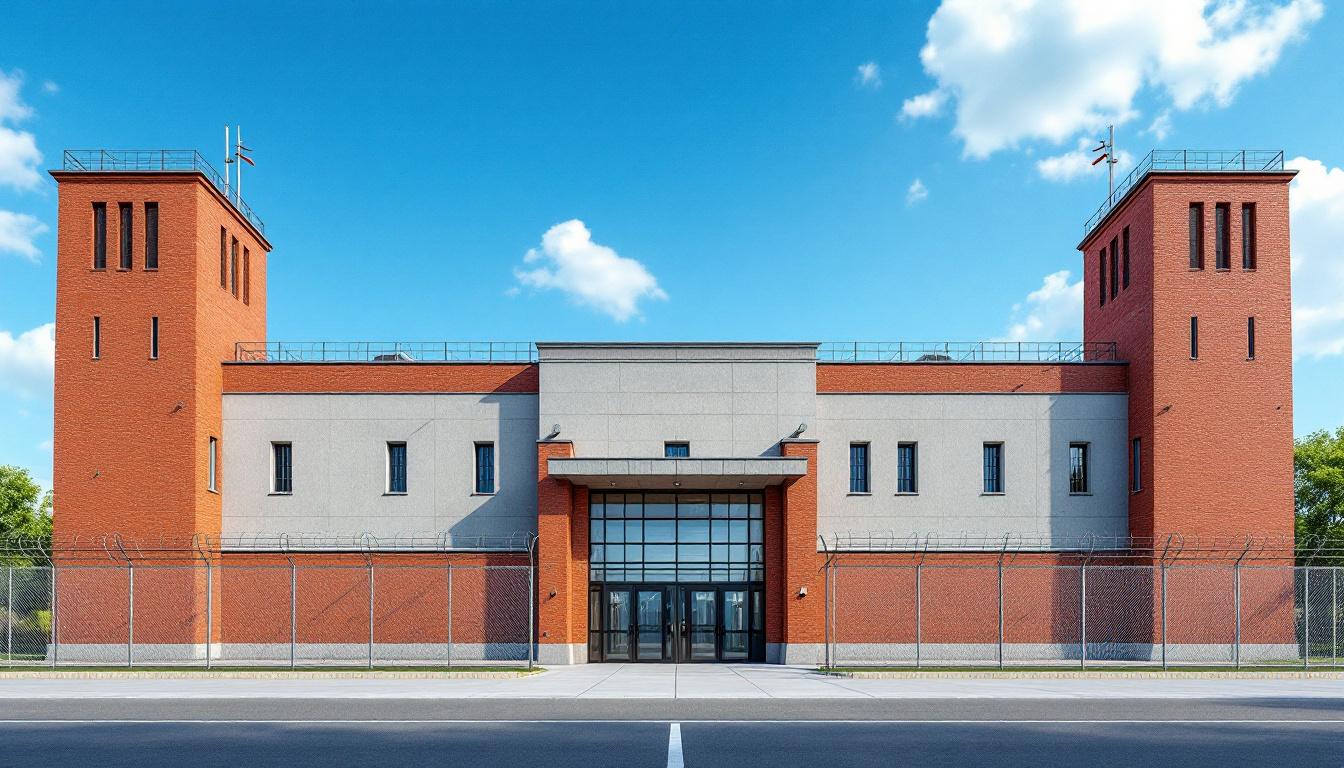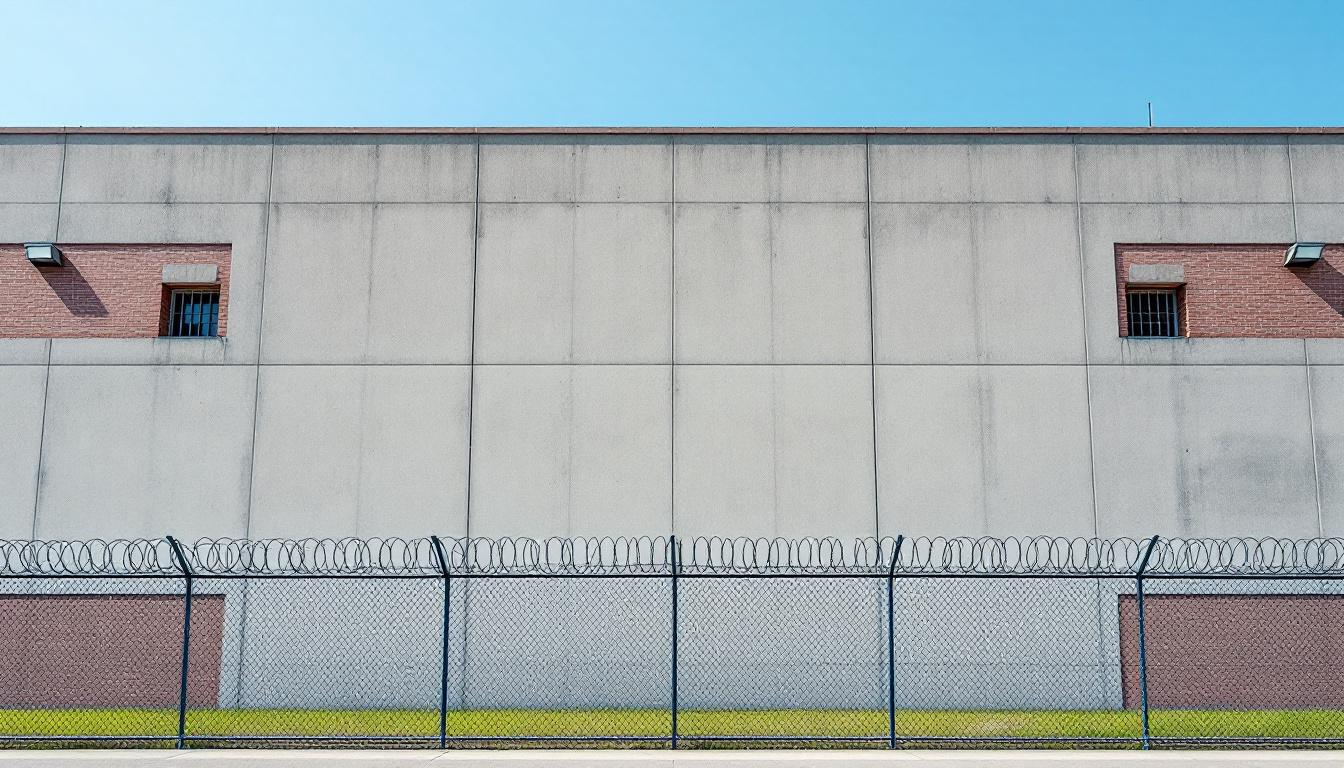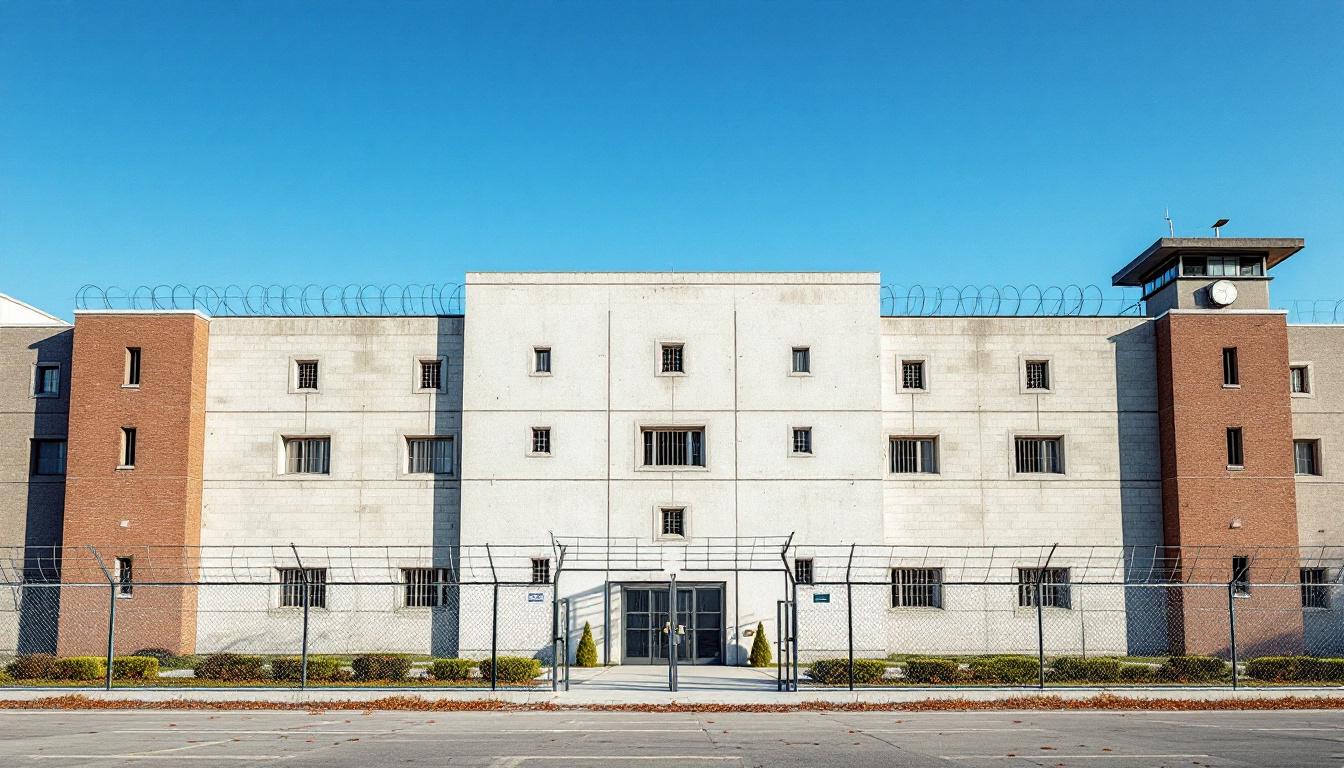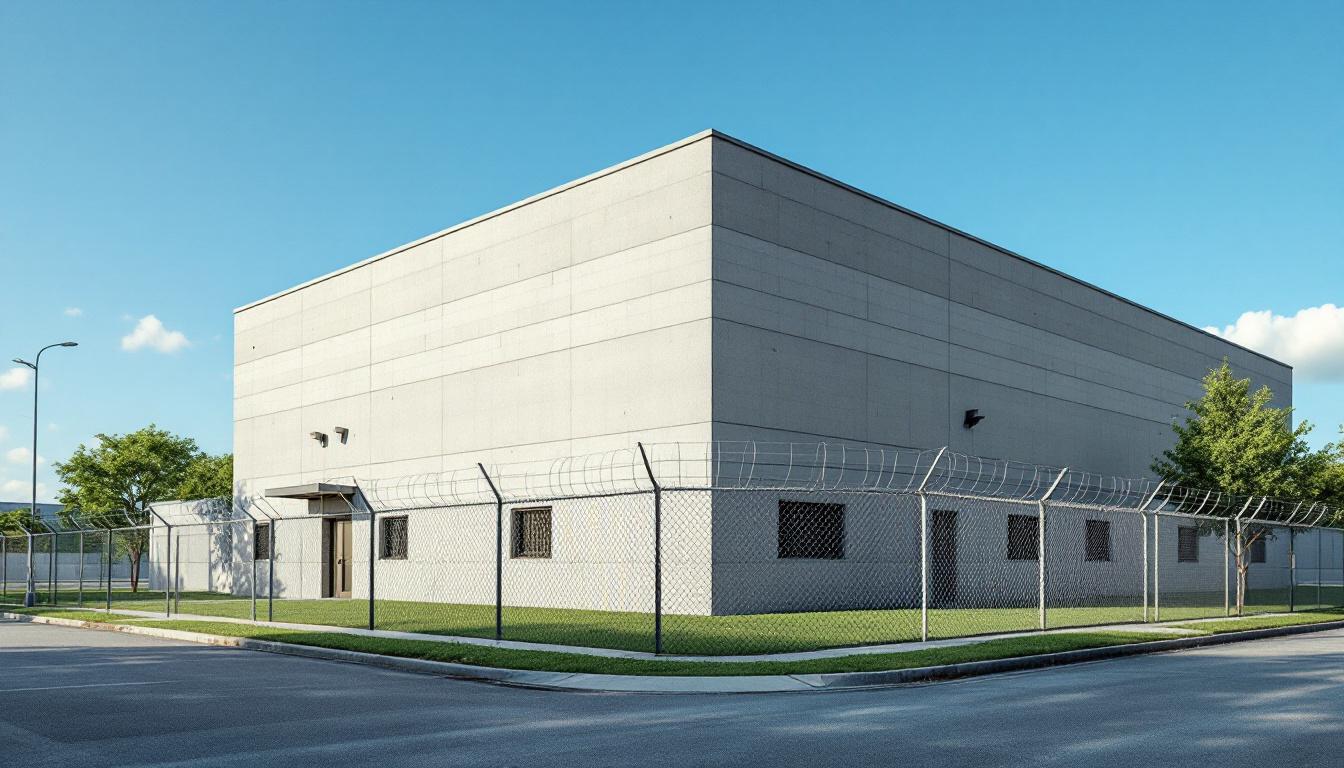
Quick Navigation
How to contact an inmate at Metropolitan Correction Center San Diego
This comprehensive guide will walk you through how to connect with an inmate at Metropolitan Correction Center San Diego. Follow the steps below to find an inmate and send letters and photos:
- Search for the inmate using our search tool below
- Create your account or log in to Penmate
- Write your message (up to 6,000 characters)
- Send instantly - inmates receive printed copies daily
Find an Inmate
Search for an inmate to start communicating today
Tip: You can search by first name, last name, or inmate ID number
To contact a person at Metropolitan Correction Center San Diego start by searching for the person on the official facility website. Perform a search by following these steps:
- Step 1: Enter their first name and last name into the search form and click "Search"
- Step 2: Locate their inmate record
- Step 3: Write down their Inmate ID and any housing information provided
Important! Be sure to enter the person's full name. Nicknames should not be used.
How to Send Messages to Inmates

You can use your phone or computer to send emails, letters, and photos to an inmate. Messages are sent electronically to inmate tablets or kiosks at the facility. If you would like to send a message, start by searching for an inmate at Metropolitan Correction Center San Diego.
Sending Photos and Postcards

A great way to send love and support to a loved one at Metropolitan Correction Center San Diego is to send photos and postcards. It only takes a few minutes to send photos from your phone and it makes a huge difference. You can also mail postcards with words of support and inspiration, or design your own postcard for special moments like birthdays and holidays.
Important! Be sure not to send any explicit photos or they may not be approved by the facility. You can also use a photo printing app like Penmate to make sure your photos are printed at the correct size (4x6 or 3x5) and are mailed according to the rules and regulations of Metropolitan Correction Center San Diego.
Frequently asked questions about Metropolitan Correction Center San Diego
-
How long does it take to deliver a message?
If you're sending an email message your letter is usually delivered within 24-48 hours. For messages sent via mail you should expect delivery within 3-7 days. All messages will need be approved by Metropolitan Correction Center San Diego.
-
How much does it cost to send a message to Metropolitan Correction Center San Diego?
You can send a message free using your phone or mail a message via USPS for the price of a $0.60 stamp and envelope. You can also purchase credits or e-stamps from services starting at $1.99.
-
What services can I use to contact an inmate at Metropolitan Correction Center San Diego?
Penmate
You can use Penmate to send letters and photos to an inmate from your phone. It's an easy way to stay in touch during your loved one's incarceration. Use the inmate locator to find an inmate's location and contact information, then you can send messages within a few minutes.
Securus messaging
Securus may be another option for communicating with an inmate at Metropolitan Correction Center San Diego. You can create a friends and family account and purchase credits to send messages. All messages will be reviewed and must be approved by the facility.
JPay
Some county jails and state prisons may support sending messages with JPay. You must register an account with the system, find your loved one, and purchase stamps to send messages. For some locations you can also attach photos.
Smart Jail Mail
You may also check if Smart Jail Mail is available at Metropolitan Correction Center San Diego. Smart Jail Mail is operated by Smart Communications and has contracted with some state and county jails. After purchasing credits, your messages and photos are sent to the facility, printed out, and then handed out to your loved one.
-
What is the mailing address of Metropolitan Correction Center San Diego?
Mailing address:
Metropolitan Correction Center San Diego
808 Union St
San Diego, CA 92101
Phone: (619) 232-4311 -
What are the visiting hours at Metropolitan Correction Center San Diego?
Visiting hours at Metropolitan Correction Center San Diego vary by housing unit and security level. Generally, visits are scheduled on weekends and holidays, with some facilities offering weekday visits. Contact the facility directly at (619) 232-4311 or check their website for the current visiting schedule. Visits typically last 30-60 minutes and must be scheduled in advance.
-
What items are prohibited when sending mail to Metropolitan Correction Center San Diego?
Prohibited items typically include: cash, personal checks, stamps, stickers, glitter, glue, tape, staples, paperclips, polaroid photos, musical or blank greeting cards, hardcover books, magazines with staples, and any items containing metal or electronics. Only send letters on plain white paper with blue or black ink. Photos must be printed on regular photo paper (no Polaroids). Always check with Metropolitan Correction Center San Diego for their specific mail policies.
-
How do I send money to an inmate at Metropolitan Correction Center San Diego?
You can send money to an inmate at Metropolitan Correction Center San Diego through several methods: 1) Online using JPay, Access Corrections, or the facility's approved vendor, 2) Money orders mailed directly to the facility with the inmate's name and ID number, 3) Kiosks located in the facility lobby, or 4) Over the phone using a credit or debit card. Fees vary by method, typically ranging from $2.95 to $11.95 per transaction.
-
Can I schedule a video visit with an inmate at Metropolitan Correction Center San Diego?
Many facilities now offer video visitation as an alternative to in-person visits. At Metropolitan Correction Center San Diego, video visits may be available through services like Penmate, Securus Video Connect, GTL, or ICSolutions. Video visits typically cost $10-20 for 20-30 minutes and must be scheduled in advance. You'll need a computer or smartphone with a camera and reliable internet connection. Contact the facility for their specific video visitation policies and approved vendors.
-
What identification do I need to visit an inmate at Metropolitan Correction Center San Diego?
All visitors must present valid government-issued photo identification such as a driver's license, state ID, passport, or military ID. Minors must be accompanied by a parent or legal guardian who can provide the minor's birth certificate. Some facilities require visitors to be on the inmate's approved visitation list, which may require a background check. Contact Metropolitan Correction Center San Diego for specific ID requirements and visitor approval procedures.
-
How can I find out an inmate's release date?
To find an inmate's release date at Metropolitan Correction Center San Diego, you can: 1) Use the online inmate search tool if available, 2) Call the facility's records department, 3) Contact the inmate's case manager or counselor, or 4) Have the inmate provide this information during a call or visit. For privacy reasons, some facilities only release this information to immediate family members.
Facility Overview
Contact Information
Metropolitan Correction Center San Diego808 Union St
San Diego, CA 92101
Phone: (619) 232-4311
Official Website

About Metropolitan Correction Center San Diego
Community safety and judicial support form the cornerstone of what San Diego MCC provides to residents throughout the region, serving as a vital component in South Dakota's correctional infrastructure. This SD correctional facility operates within the broader network of state institutions, typically housing individuals at various stages of the legal process while maintaining focus on security protocols and basic inmate services that align with state correctional standards.
The facility's population served encompasses individuals from diverse backgrounds across the San Diego area and surrounding communities, with operations designed to accommodate varying custody levels and legal statuses. San Diego MCC generally provides essential services that may include medical care, educational opportunities, and vocational programming, though specific offerings often depend on available resources and state funding allocations. The correctional facility typically maintains structured daily routines for residents, incorporating elements that support both institutional security requirements and basic rehabilitation principles common throughout South Dakota's correctional system.
Within San Diego's role in the state's correctional framework, the facility often serves multiple functions including pre-trial detention, sentenced population management, and coordination with court systems for legal proceedings. Staff members generally work to maintain institutional safety while providing access to services such as library resources, religious programming, and family visitation opportunities when security protocols permit. The facility's operations typically reflect standard correctional practices found throughout the midwest region, emphasizing both public safety considerations and the basic needs of the inmate population during their period of incarceration.
Programs & Services
Personal growth and skill development form the foundation of rehabilitation services at San Diego MCC. The facility typically emphasizes building practical abilities that inmates can use both during incarceration and after release. These services focus on addressing individual needs while preparing participants for successful community reintegration.
Educational services may provide opportunities for inmates to advance their academic skills and complete degree requirements. The facility often includes basic literacy programs alongside higher education coursework. Also, vocational training services typically offer hands-on instruction in construction trades and other marketable skills. These programs usually combine classroom learning with practical application to help inmates develop job-ready competencies.
Work programs often provide structured daily activities that build responsibility and work habits. Landscaping services may offer outdoor work opportunities that contribute to facility maintenance while teaching valuable skills. Also, trauma-informed care services typically address underlying issues that may have contributed to criminal behavior. Intramural sports programs usually promote physical wellness and teamwork among participants. These support services work together to address the various factors that influence successful rehabilitation and community reentry.
Daily Life & Visitation

The controlled environment of housing units shapes every aspect of life within the facility's walls. Inmates typically follow structured schedules that begin early in the morning with count procedures and continue through designated meal times, work assignments, and evening lockdown. Today's routine generally mirrors yesterday's, as consistency provides the framework that helps residents adapt to institutional life.
Living accommodations usually consist of shared cells or dormitory-style housing units, where inmates may have one or more roommates depending on the facility's current capacity. Personal belongings are generally limited to approved items that can be stored in designated areas within each housing unit. Meals are typically served in common dining areas at scheduled times, with inmates moving in groups under staff supervision. Also, the commissary system allows residents to purchase additional food items and personal care products using funds from their institutional accounts.
Recreational opportunities often include access to outdoor exercise areas, indoor fitness equipment, and organized sports activities when security levels permit. Work assignments may involve kitchen duties, facility maintenance, or other institutional jobs that provide structure and sometimes modest compensation. However, programming schedules also include educational classes, vocational training, and counseling sessions designed to support rehabilitation goals. Family connections are maintained through scheduled visitation periods, telephone privileges, and correspondence, though these communications are typically monitored as part of standard security procedures.
Ready to Connect?
Start communicating with your loved one today
Search for an Inmate

